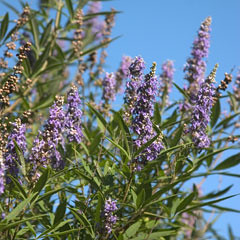
Share on Facebook



"Consumer research indicates that a number of users found relief from hay fever when taking propolis. In 1980 Dr Remy Chauvin, the French physician noted for his championing of propolis, treated a number of patients with ha fever. The patients were treated with with a alcohol extract of propolis in soluble starch. Each patient received 7-8 doses daily for eight days, each dose containing 250 mgs of dry propolis extract. The patients' symptoms were almost completely alleviated. Small doses were given in the following two years with continuing positive results"
 All the ingredients have arrived - propolis from Bulgaria and (80%) rum from Austria - so this morning it was time to finally make propolis tincture. I used the measurements in James Fearnley's Bee Propolis book which are 1:4 propolis to alcohol. I'd actually frozen the propolis (which I don't think was really necessary) to make it easy to break up. I chopped the 60g up into small chips and then topped up with 240ml alcohol. Now it sits for 2 weeks, with a few shakes everyday, until it's ready to strain off!
All the ingredients have arrived - propolis from Bulgaria and (80%) rum from Austria - so this morning it was time to finally make propolis tincture. I used the measurements in James Fearnley's Bee Propolis book which are 1:4 propolis to alcohol. I'd actually frozen the propolis (which I don't think was really necessary) to make it easy to break up. I chopped the 60g up into small chips and then topped up with 240ml alcohol. Now it sits for 2 weeks, with a few shakes everyday, until it's ready to strain off!
 Chaste tree (vitex agnus castus) is said to help with a variety of conditions including pre-menstrual symptoms, amenorrhea, and menopause - it is known to have a "normalising" effect on the female hormones. Both the leaves and berries are used. It goes back a long way (as well as going up a long way - about 22 feet) and apparently featured in Homer's Illiad capable of warding off evil. Despite it's name, it seems to have a split personality with the leaves reducing sexual desire and the berries being aphrodisiac. I haven't tested this theory, LOL! I saw this herb for the first time on my visit to Wisley, but it wasn't in flower like the one in this photo from Flickr.
Chaste tree (vitex agnus castus) is said to help with a variety of conditions including pre-menstrual symptoms, amenorrhea, and menopause - it is known to have a "normalising" effect on the female hormones. Both the leaves and berries are used. It goes back a long way (as well as going up a long way - about 22 feet) and apparently featured in Homer's Illiad capable of warding off evil. Despite it's name, it seems to have a split personality with the leaves reducing sexual desire and the berries being aphrodisiac. I haven't tested this theory, LOL! I saw this herb for the first time on my visit to Wisley, but it wasn't in flower like the one in this photo from Flickr. Motherwort (leonurus cardiaca) is said to help with absent or painful menstruation as well as pre-menstrual tension and menopausal flushes. In Bartam's Encyclopaedia one suggestion is to combine it in equal parts with black cohosh and cramp bark. It is also said to combine well with vervain. It is also used for angina.
Motherwort (leonurus cardiaca) is said to help with absent or painful menstruation as well as pre-menstrual tension and menopausal flushes. In Bartam's Encyclopaedia one suggestion is to combine it in equal parts with black cohosh and cramp bark. It is also said to combine well with vervain. It is also used for angina. It's about all things herbal! Recipes, remedies, news and views - I hope you enjoy reading it as much as I enjoy sharing it. :-) Find out more on the About me page.
Until recently I was the owner of Amiya Natural Beauty. As of the start of 2012 Amiya has a new owner, my friend Kate Wiltshire, who will be continuing with all the herbal goodness!
| UK Herbarium Ring Owner: Herbaholic Site: Herbaholics Herbarium |
||||
 |
 |
 |
 |
 |
| Get Your Free Web Ring by Bravenet.com |
||||
